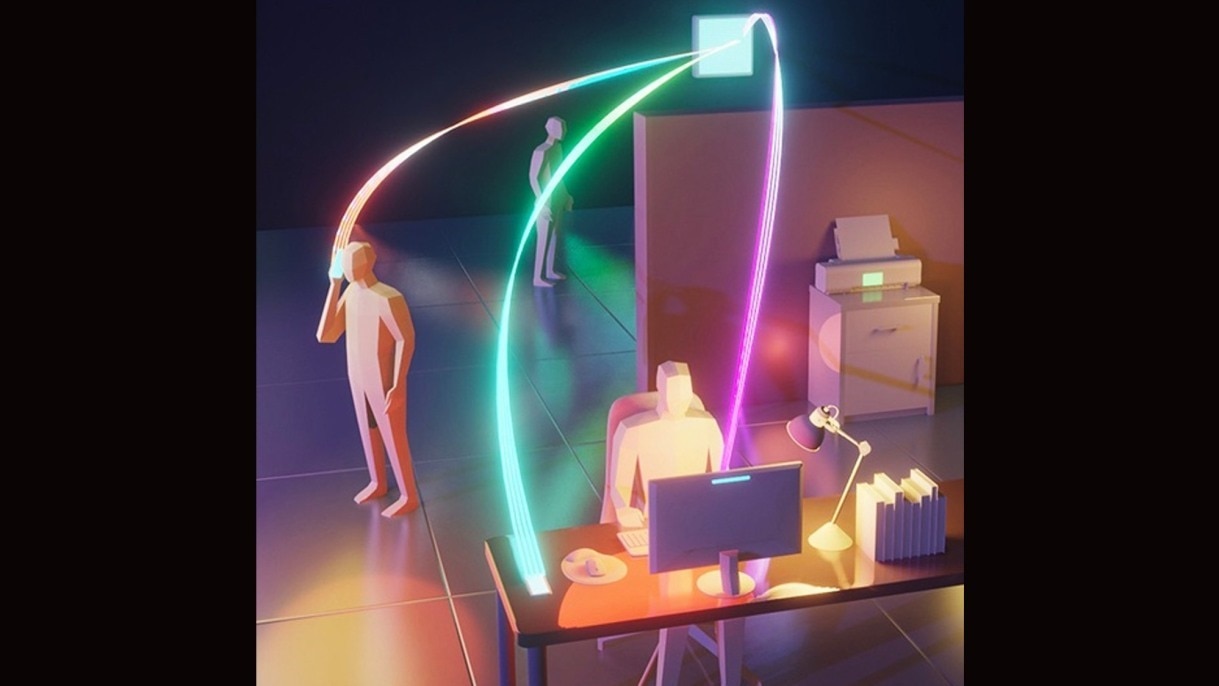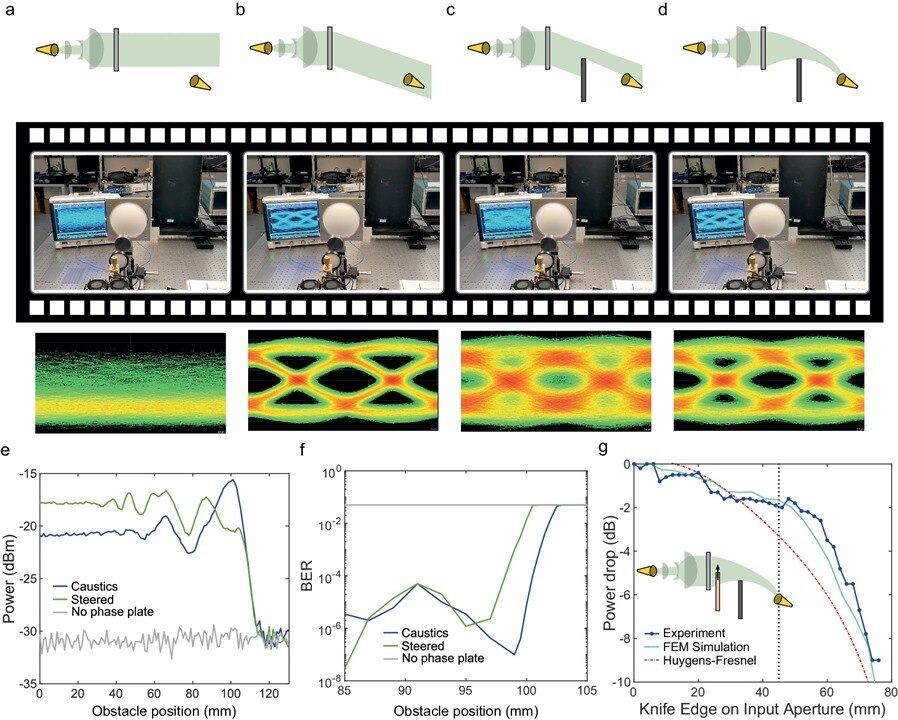
Curving terahertz signals could become the future of 6G data transfer. (Image Credit: the Mittleman Group)
Future 6G networks may rely on photon curving, rather than a line of sight between the receiver and transmitter, to transmit signals. Rice University and Brown University researchers built a transmitter with wave manipulation capabilities for 6G signals.
The trade body GSMA says that 6G is expected to be available by 2030, and it could be thousands of times faster than 5G. While 5G operates in less than 6 GHz in the electromagnetic spectrum, 6G could operate between 100 GHz and 300 GHz in sub-terahertz (THz) and THz bands (below infrared). However, there's a higher risk of obstacles blocking out the signals. High-frequency 5G and 6G signals require a clear line of sight between the transmitter and receiver.
The team demonstrated that high-frequency signals can curve around buildings and other objects."This is the world's first curved data link, a critical milestone in realizing the 6G vision of high data rate and high reliability," the study co-author Edward Knightly says.

The signals curved around a physical object. (Image Credit: communications engineering)
The THz radiation in this electromagnetic spectrum contains photons that move straight. The team discovered that accelerating beams of light create unique configurations of electromagnetic waves capable of curving to one side while moving. With the team's transmitters that change the intensity, timing, and strength of these signals, waves can be formed to produce a signal that doesn't degrade while approaching a partially blocked receiver.
So, a light beam can curve around objects by shifting data to a region that doesn't have any obstacles in the way. And the team's study could lead to practical 6G networks.
5G mmWave is the fastest bandwidth and has the highest 5G radio frequencies (24 GHz – 100 GHz), providing theoretical download speeds reaching 10 – 50 Gbps. Meanwhile, the THz waves are higher (100 GHz – 10,000 GHz), a frequency that's essential for 1 Tbps data speeds.
"We want more data per second," says Daniel Mittleman, a professor at Brown's School of Engineering and senior author of the study. "If you want to do that, you need more bandwidth, and that bandwidth simply doesn't exist using conventional frequency bands."
Such high frequencies mean 5G mmWave and 6G signals can be curved in the future, eliminating the need for buildings to have a lot of receivers and transmitters. Even then, the receiver must be within the transmitter's near-field range to achieve signal bends. That would require a distance of 10 meters apart – more idea for 6G WiFi networks.
"One of the key questions that everybody asks us is how much can you curve and how far away," Mittleman said. "We've done rough estimations of these things, but we haven't really quantified it yet, so we hope to map it out."
Have a story tip? Message me at: http://twitter.com/Cabe_Atwell
